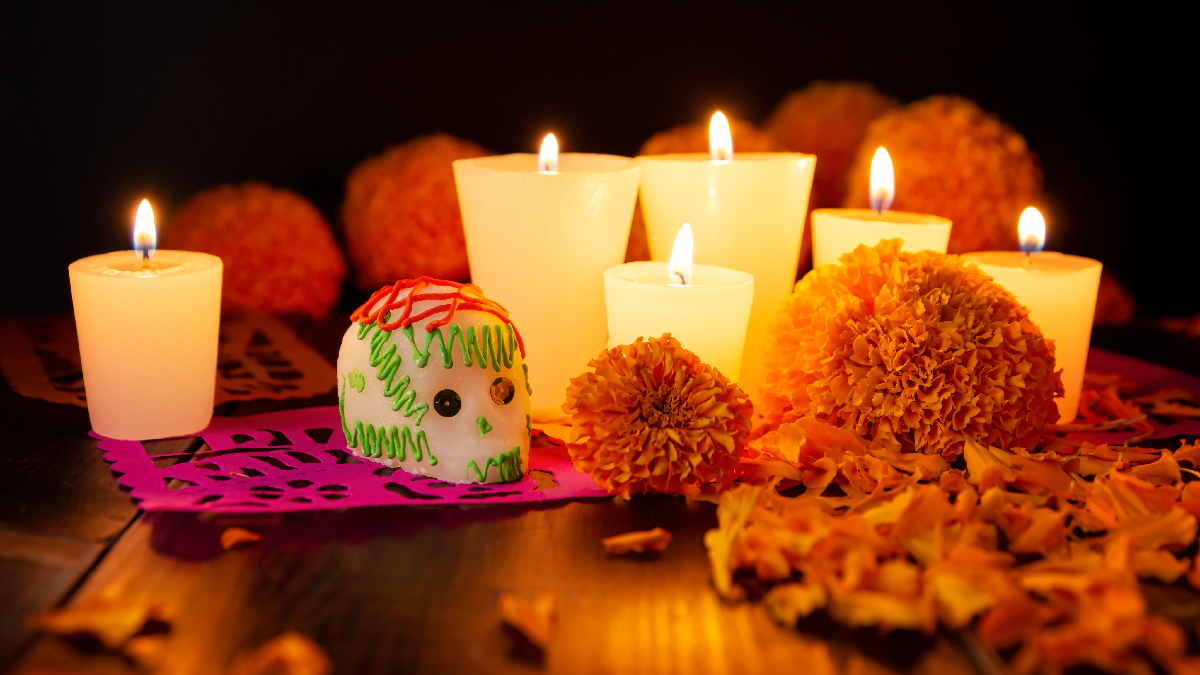It may not muster up the excitement Halloween boasts, but Día de los Muertos (or Día de Muertos) is easily one of fall’s best holidays.
No shade to Halloween, of course — I’m an avid participant in every annual celebration — but all the shade to Thanksgiving. I love eating as much as the next American, but the atrocities Native Americans suffered to make that holiday a tradition makes it one of my least favorites. Día de los Muertos though? No notes. It’s a beautiful holiday from top to bottom, offering up a range of wholesome, cathartic traditions centered around the people we’ve loved and lost.
What is an ofrenda?
Día de los Muertos is commonly undercut by the popularity of Halloween, but even in the U.S., a portion of the population observes the Day of the Dead. The Mexican holiday presents the all too rare opportunity to reflect on our lost loved ones and celebrate the lives they led and the lessons they taught. It extracts the tragedy from our discussions of death and instead invites us to collect with friends and family, drop our guards, and laugh at old stories. It’s a joyous, colorful celebration of both life and death, and it’s seeped in tradition.
Some of those traditions revolve around the food, flowers, and music typically enjoyed on the first few days of November. The holiday is usually celebrated on the second of the month, but it’s also observed on the first, occasionally sixth, and once in a while on Oct. 31. Regardless of when the celebrations kick off, a few elements are vital to a true Día de los Muertos experience.
The first of these is the ofrenda. These come in all shapes and forms, of course, but they are all intended for the same purpose: as a welcoming point for our deceased loved ones. Sometimes these are constructed around graves or other significant sites, but just as often they are put together at home.
An ofrenda is a sometimes elaborate, but just as often simple, altar set up to celebrate our dead. They typically include decorations — including those iconic sugar skulls and firey marigolds — sometimes food and drink, and almost always candles. A classic ofrenda is set up with three tiers, each one sporting different elements.
The first tier is dedicated to the family member or friend you are celebrating. It typically sports a picture of the loved one alongside any religious images or iconography that suits your soul. The second tier is intended to tempt the loved one back, and so often contains elements of their favorite things. Beloved foods, treasured items, and similarly sentimental objects usually decorate this tier, paying homage to the life they lived. The final tier is typically adorned with candles, and occasionally a wash basin or bowl and towel, so the spirits of our loved ones can refresh themselves after the long journey into our world.
The entire altar usually also sports decorated calaveras, or sugar skulls, across each of its tiers. Decor and items representing the four elements are also common, but are regularly made up of that already listed — the basin for water, the food for earth, the candles for fire, and the decorative Papel picado that decorate many ofrendas make up air.
If you’d like to make your own ofrenda, each of these elements is by no means necessary. Combining as many of them as possible will give you the most authentic Día de los Muertos experience, however, and will ensure the early November holiday becomes a staple of your yearly celebrations.
